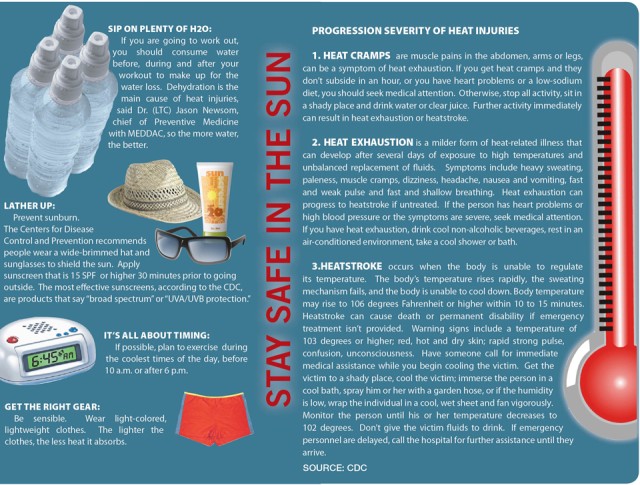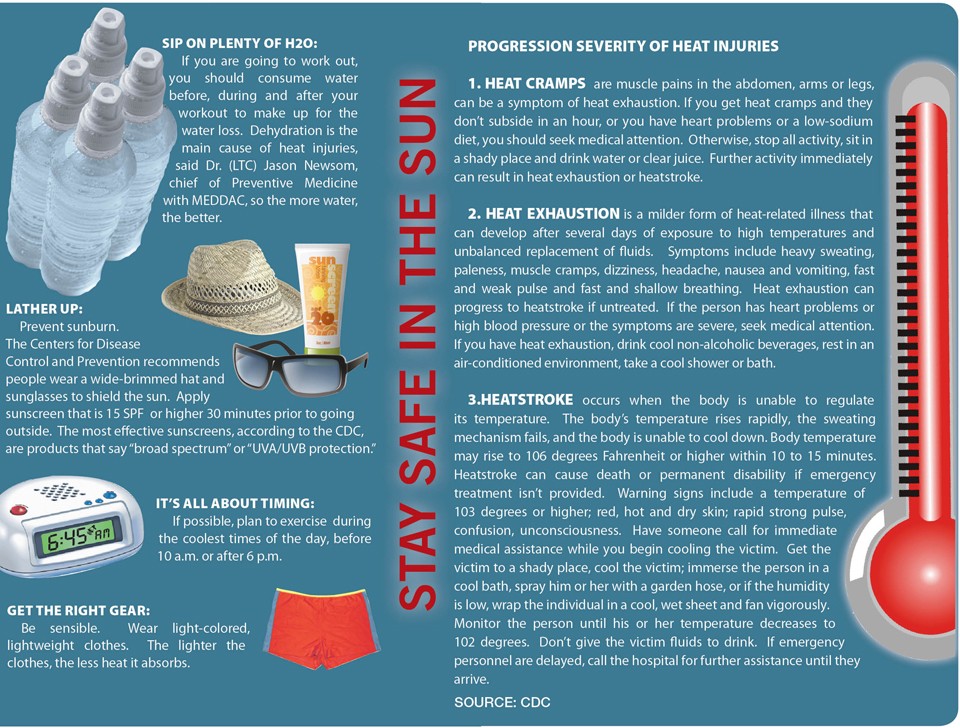Summer is in full swing and so is the Georgia heat, and that means people should focus on heat safety, said Dr. (LTC) Jason Newsom, chief of Preventive Medicine with MEDDAC.
Whether people are training for sports or spending time outside, Newsom said heat safety is key.
"One hundred degrees in Phoenix, Arizona, is tolerable (because it's dry heat), but 100 degrees in Georgia is sweltering because of the humidity," Newsom said.
The average high at Fort Benning in July is in the low 90s, according to www.weather.com.
The best way to avoid heat injuries, including heat cramps, heat exhaustion and heatstroke, is to stay well-hydrated, wear light-colored clothes that are lightweight, and train in the cooler times of the day, he said.
"Don't make things harder on yourself than you have to," Newsom said. "Pick a time you will train that isn't in the heat of the day, whether it's early morning or in the evening."
Another way to avoid injuries is to obey your body.
"Most people will get heat cramps as the first sign of overexertion," Newsom said. "At this point, they should stop, stand in the shade, cool down and drink plenty of water. Pushing your body further than heat cramps can result in serious injuries including heat exhaustion and heat stroke."
Dehydration is the main cause of heat injuries so drinking plenty of water is essential, he said.
Stephanie Navarro, a military spouse, said staying hydrated is a priority when she is outside with her two children, Emma, 6, and Olivia, 3. Navarro and her children go to the pool for three or four hours each day. Navarro said she goes to the pool in the morning, when it's cooler outside.
"We stay safe in the sun by applying lots of sunscreen and drinking lots of water," she said. "Heat safety is not just for adults. It's for kids, too."


Social Sharing